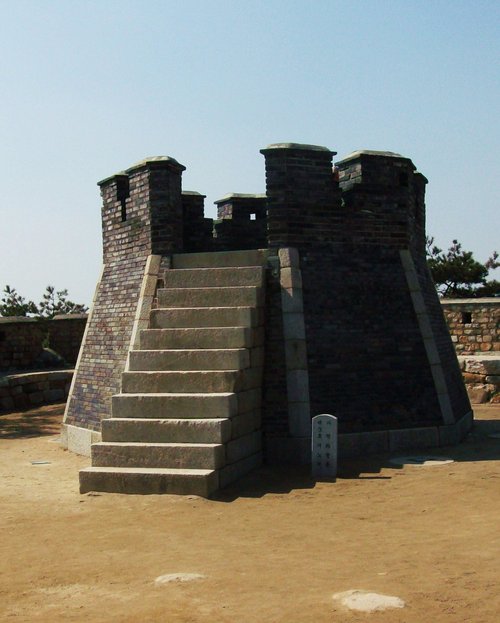Hwaseong is one of the better preserved fortifications in Korea, despite suffering severe damage during the Korean War. There are countless fortresses in Korea, including some that are impressive, but if you only have time for a few, make sure to visit Hwaseong and Namhansanseong. I walked the entire wall, it's a pleasant couple of hours, with interesting stops along the way, and a fair bit of exercise. Additionally, there is an archery area that provides a great activity amongst friends. Regarding accessibility, the fortress is also conveniently only a long subway ride from Seoul. Since 2024, the Suseo GTX-A line opened, which gives travelers more options.

One might wonder why such a prominent fortress is located in Suwon? Hwaseong Fortress is a product of the Reign of Jeongjo of Joseon (1776-1800). Jeongjo is a widely celebrated monarch in Korea, he sought to relocate the capital from Seoul to a new location: Hwaseong (a name chosen by Jeongjo himself). The fortress that many of us have visited is only one legacy from King Jeongjo's ambitious plan as many surrounding historic sites compliment the fortress, including the inscribed Joseon Yungneung Cluster.
Namhansanseong or Hwaseong?
I would suggest not visiting Hwaseong, Namhansanseong, and Hanyangdoseong back to back. Some reviewers have been less impressed by Namhansanseong compared to Hwaseong Fortress, but I am a bit of an outlier here. Hwaseong is a city fortress and Namhansanseong is located on a small mountain, which adds greatly to the later's scenic value. Namhansanseong is nearly two hundred years older and its mountainous setting means it does not have the imposing gates and observation towers found at Hwaseong (which was supposed to be the new capital). I found both fortresses to be worth visiting, but I think I slightly prefer Namhansanseong for photography, hiking, and its overall authenticity.
Flickr Album